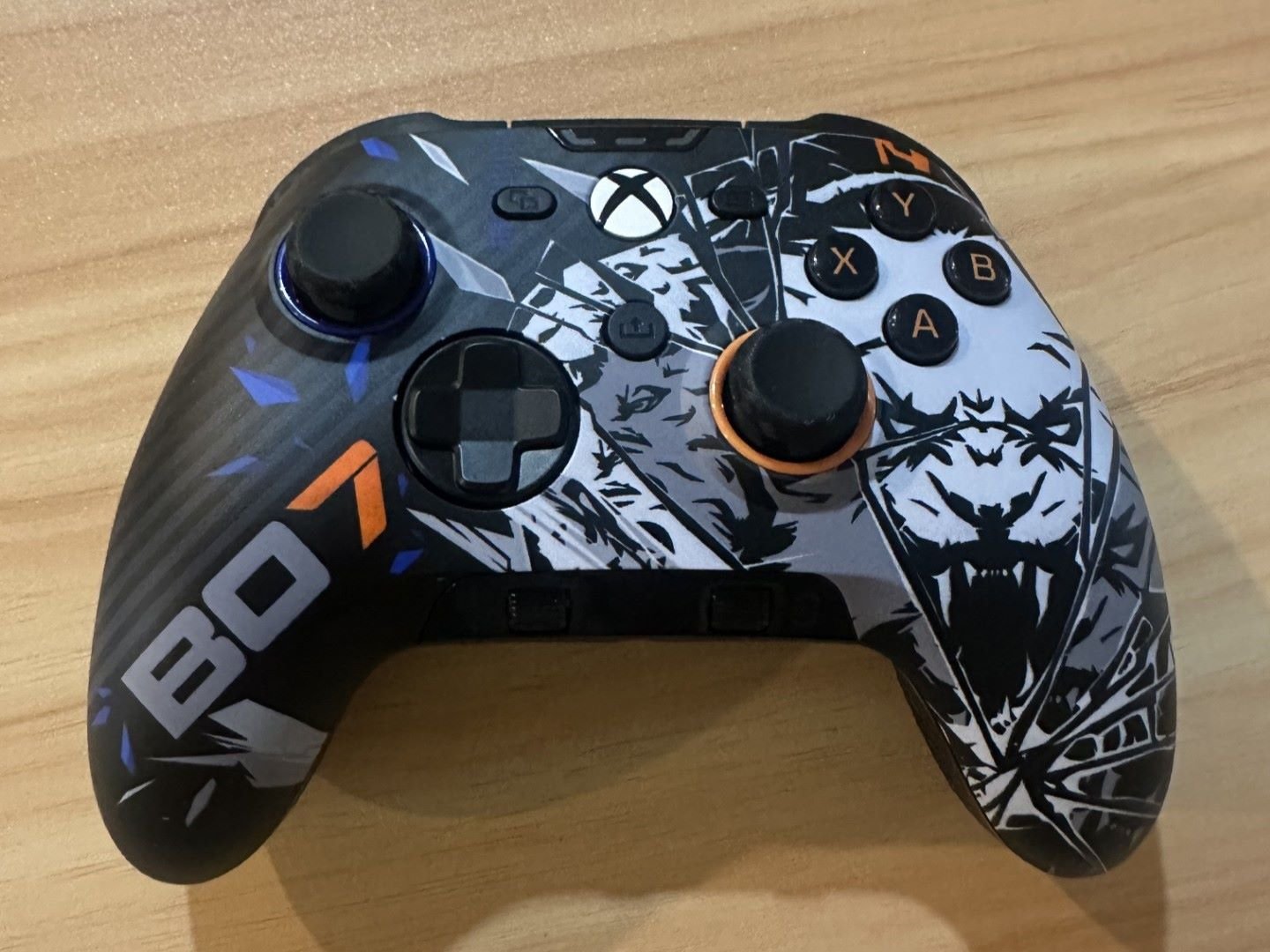It’s crazy to think that we are almost 20 years out from the release of the Nintendo GameCube. The system holds an insane amount of nostalgia for me and is home to a number of my favorite games of all time. Unfortunately, as is the case with anything retro these days, prices for GameCube games and accessories are starting to shoot up. Controllers in good condition especially are starting to become a hot commodity, particularly the WaveBird Wireless Controller. WaveBirds have been around as long as the GameCube itself, give or take a few weeks, but getting one today in good shape for a reasonable price is more difficult than you would expect.
More often than not, you will find listings for the controller with no wireless receiver, making the whole thing rather useless. And let’s be honest: paying upwards of $75 for a potentially 20-year-old controller can be a hard sell. So I, like many of you I’m sure, have begun looking into more modern alternatives. Sure enough, there are a number of options to choose from out there, including a variant from our friends over at TTX Tech who were nice enough to send over a pair for testing. Having enjoyed my previous experiences with the company’s products, I had some solid expectations for the TTX Tech WaveDash Wireless Controller. Sadly, the controllers don’t quite hit the mark.
What’s In The Box
The WaveDash comes in an awesome retro-themed box with a throwback style logo to match! While it may be a throwback that matches the style of the NES more than the GameCube, it works and gets me excited to open it up to get to the exposed controller within the plastic housing. The sides of the box have a glossy depiction of the WaveDash as well as notations about its 2.4GHz transmission and its use for GameCube. The back of the box is a bit disappointing as it contains a few errors, such as the controller featuring rumble and an infrared receiver; it doesn’t use either. There are some additional notes on compatibility with the controller being usable on the Wii, Wii U, and Switch. The last 2 will need to be used with a GameCube Controller Adapter. Inside the packaging, you will find the WaveDash, 2.4 GHz Receiver, and a user’s manual.
Aesthetics And Build Quality
At first glance, it would be easy to mistake the WaveDash for an official WaveBird as they use a very similar mold. There are new ridges outlining the controls, and a series of raised bumps occupy the area the WaveBird branding would reside. At the top, the TTX branding resides within a small recess. The last major cosmetic difference is the removal of the channel selector. Otherwise, this is a standard GameCube layout you would expect to find on the WaveBird. Even the battery compartment looks pretty much the same. Yes, this controller still takes AA’s, which I personally don’t mind as I just throw in a pair of rechargeable ones.
Unfortunately, the TTX Tech WaveDash begins to show its problems the second you hold it. The build quality of the controllers falls short of what you will find on a Nintendo pad, wireless or otherwise. Face buttons and D-pad are stiff but not deal-breaking. The analog triggers feel like they have a shorter throw range and don’t quite stop before the button, but the press at the bottom is satisfying. The Z button on the other hand is too stiff for my tastes.
The biggest issue I have with the WaveDash’s quality though comes from its analog sticks. Here is what’s weird: the quality varies between units. The black WaveDash I received is vastly better than the platinum one. If you rotate the thumbsticks you will see that they begin to rub against the gate of the controller in an improper way. The C stick hits fine along the bottom left but scrapes on the upper right as you can see from the discolorations here. The main analog stick scrapes the underside of the thumbpad in every direction pressed, keeping it from hitting its full range. On the black WaveDash, these problems are significantly reduced, with the C stick having no issues and the main stick only scraping on the right side. Even without the scraping, each of the analog sticks is very tight and needs some working before feeling acceptable.
On the positive side, the overall build is solid enough that there won’t be any concerns about breaking it from normal use. It holds up against the normal endurance tests I like to put controllers through! A quick note about the receiver: it also shares design aesthetics with an official WaveBird receiver minus the channel selector. It also fits well into the GameCube system with no worries about death grip.
Gameplay
Build quality aside, let’s talk about how the WaveDash handles some gameplay! One of my favorite Gen 6 games is Freedom Fighters, a fairly casual third-person shooter. The game handled beautifully on the WaveDash and made for a great introduction to the controller. Outside of needing some time to get used to the stiff analog sticks, the game played beautifully and was a ton of fun to replay. With its 2.4 GHz transmission, inputs from the WaveDash appear on screen quickly and accurately. I have to say, being able to finally play GC games wirelessly was really enjoyable even with the lack of rumble. You all should know by now that I am a rumble fiend! This experience would translate over to most of the games in my GC library. Games like Mario Kart Double Dash, Wind Waker, and Metroid Prime all played great!
Unfortunately, the WaveDash experience would begin to falter as I moved into more demanding titles. First-person shooters are where I began to notice the problems. Loading up 007 Nightfire, it quickly became apparent that the analog sticks don’t offer the precision found on an official GC controller. Because of this, it is much harder to play and enjoy these games without a heavy dose of auto-aim. This is actually an area where the stiff sticks come in handy though, as they do help you maintain control and access to fine aiming. It does take some time to get used to but it can be done to provide an ok experience in the end. This issue is also a problem on Rogue Squadron 3 but unlike Nightfire, I wasn’t able to play it to the point where I could overcompensate for the stick’s shortcomings.
I would also like to point out that the controller doesn’t work at all for Rogue Squadron 2 on original GameCube hardware. This isn’t wholly unexpected to me because I believe even official WaveBird controllers have a similar problem with the title. Interestingly enough, if you play the game through a modded Wii or Wii U using Nintendont, the game will become fully playable with the WaveDash, albeit with the same issues that were present on Rogue Squadron 3. If you try to just play the game through a standard Wii the controls will once again be broken.
After what I had experienced with the thumbsticks, I was curious to see how the analog triggers would handle during precision moments. Unfortunately, they also choke under the pressure as you can see when trying to do drag races in Need For Speed Underground. In this mode, you need to hold the trigger at a certain position to get a perfect start, which is key to winning in most cases. On the WaveDash, I have yet to get a perfect start, but switching over to the official GC controller getting one is trivial to achieve. Thankfully there aren’t many games that require this level of analog trigger precision. Another thing I noticed about the triggers while playing Rogue Squadron is that you will accidentally engage the digital button, resulting in closing your S-foils unintentionally quite frequently.
With these shortcomings known, let’s talk about an area of the WaveDash that surprised me: the D-pad. Loading up games like Tony Hawk’s Pro Skater 3 I was impressed at how well the game played on the WaveDash’s D-pad. Every combo direction worked without a problem and activating specials was easy. I think I may have noticed one instance where the D-pad misread my input, but I wasn’t able to get it to happen again, so I will chalk it up to user error. Loading up my favorite controller test game, Mega Man X4, I was again happy with how the D-pad and face buttons responded without any trace of perceivable input lag. I was even able to pull off a Zero Mode challenge in Mega Man X without much hassle outside of the normal trolling such a run provides.
I can also confirm that the controller works as intended across GC, Wii, Wii U, and Nintendo Switch. Battery life has also been excellent with my rechargeable batteries giving me about 12 hours of play per charge. The WaveDash even has a handy sleep mode built into it in case you forget to throw the power switch! One last thing: the Z button sucks. I didn’t know where else to put it so there it is, the button is stiff and not fun to use.
What It Could Have Done Better
I would love to see TTX Tech revisit the WaveDash at some point. The foundation of the controller is pretty solid but it needs a few tweaks. The first would be to fix the analog sticks so they don’t scrape and have a better response curve. This would fix 90% of the problems that the WaveDash has and make it a killer option for GC fans looking to get a wireless experience for the system. The last 10% can be fixed by addressing the trigger analog ranges and quality control. Oh, and fix the Z button because it is awful... I can’t stress enough just how close the WaveDash is to being great but landing instead in mediocre territory.
Verdict
Needless to say, I am left feeling a bit disappointed in the WaveDash. It works well enough for casual gaming experiences but for anything that requires more precision, it begins to choke. Combine this with the build quality issues and your experience can vary wildly between units. All of the experiences I shared previously were based on my better black WaveDash. The platinum WaveDash was significantly worse in most regards when it came to anything analog stick related, as the thumbstick scraping left the controller unable to use its full range. These quality issues are really unfortunate and make the whole thought of picking up a WaveDash a lottery of variable quality. Because of this, I can’t really recommend anyone take the risk with the TTX Tech WaveDash.


























